Kagan's Articles - FREE Kagan Articles
Research & Rationale
Increasing Student Participation, Interest, and Communication with Cooperative Learning Structures
Special Article
Increasing Student Participation, Interest, and Communication with Cooperative Learning Structures
Danielle Gradone
To cite this article: Gradone, D. Increasing Student Participation, Interest, and Communication with Cooperative Learning Structures. San Clemente, CA: Kagan Publishing. Kagan Online Magazine, Issue #53. www.KaganOnline.com
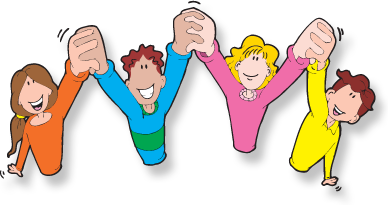
Abstract
This 8-week research project examined students' attitudes about Kagan Cooperative Learning Structures. Over the course of the study, students participated in numerous Kagan Cooperative Learning Structures. Students were surveyed early in the implementation and after implementation to determine their attitudes about Kagan Structures on a number of dimensions: Enjoyment in participating in structures, increased interest in the learning topic, improved communication skills, comfort with peers and teacher, and increase in classroom participation. The study finds students' ratings of structures overwhelmingly positive, with improved ratings from the initial to final surveys.
Introduction
Throughout my graduate career, I have learned fountains of new information that have poured into my teaching. I have always been eager to take what I have learned and implement it into my own classroom to see how it worked for me. It wasn't until I took Kagan's Cooperative Learning class that I experienced the way a child or any learner should feel inside of a classroom. From my experiences in that Kagan class, I came to the conclusion that I wanted to learn more about cooperative learning by diving deeper into this technique. I believed that the Kagan Structures I experienced would deeply impact the effectiveness of my teaching and students' overall experiences in my classroom.
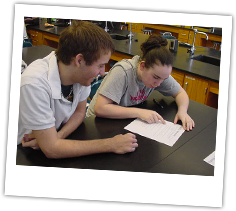
One of my main struggles as a teacher has been finding a way to have my students participate more. I spoke with my students many times about participation and how I wanted to hear their thoughts. I felt as if I were a dentist pulling teeth. They would not budge! Experiencing Kagan Structures, I believed I found a method for establishing a supportive learning environment where students feel more comfortable participating, as well as strategies for requiring participation by all students.
I feel that communication skills have been on the decline among today's youth due to the overwhelming amount of technology they engage with. Rather than interacting with each other, they are interacting with devices and, as a result, their communication skills are suffering. After struggling with this fact over the past two years, I believe the Kagan Structures are a teacher's "dream come true" for developing communication skills.
Enthusiasm is one of the keys to being a good teacher. I cannot begin to explain how motivated I felt as a teacher to go back to school and implement all of these cooperative learning techniques that I learned. The goal in my study was to find out if my experience and excitement with Kagan Structures will have the same impact on my students. Specifically, will it heighten my students' motivation and enhance social relationships, social skills, and behaviors in my classroom? My teaching practices before Kagan were quite different than the Kagan model. It was my intent to see if the Kagan strategies would have as profound of a positive impact on my students as I suspected, after having experienced Kagan Structures myself. I hoped to spark a fire within my students, just as my experience with Kagan Structures sparked a fire within me.
Method
A. Setting Description
In September, I started the year on the right foot by slowly introducing Kagan Cooperative Learning Structures to my students. In order to begin my research, there were key elements that I needed put into place systematically. I began the year with classbuilding structures. Classbuilding structures encourage positive interactions with classmates to promote a safe learning environment. I started with classbuilding so students began to feel comfortable with one another by encouraging speaking and sharing in front of their peers and myself. For example, on the first day of school, I had students do the structure Line-Ups. I asked students to line up based upon the time they woke up for school that morning and interact with classmates. Following, I used Corners to have students go to one of the four corners in the classroom that best described what they did over their summer: beach, camp, home, vacations. Students then went to the corner. Then I had students pair up with another student in their corner to participate in a Timed Pair Share. After they shared, I went throughout the room and had students introduce their partner and share what they did during their summer vacation. This introduced students to working together and sharing their thoughts with each other, as well as with me. The beginning of the year is all about getting to know one another and becoming comfortable with each other. Since I find deep importance in creating a warm environment in the beginning of the year, I was eager to use many of the suggested activities that Kagan has to offer. During this first week of school, I began recording my data by journaling before and after school, making observations throughout the days and jotting down field notes as I noticed interesting things.
After observing my students for the first couple of days, I sat down and strategically planned the student teams in my class. Creating teams is a very important component of cooperative learning. Kagan suggests grouping students in heterogeneous teams of four. At each team there is a high, middle-high, middle-low, and low achieving student. Because it was the beginning of the year and we do not have test scores in elementary school to create mixed-ability groups, I used students' Developmental Reading Assessment (DRA) scores and writing rubric scores as a guide to create teams. I also tried to group students based upon personality type after a few days of classroom observations. Kagan suggests that teams stay together for 6 weeks. Since I conducted my research over an 8-week period, I changed groups for the last two-week period.
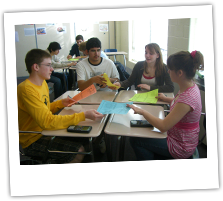
Once the teams were established, I added teambuilding structures into the classroom. I had students participate in a Timed RoundRobin. I had students use a Venn diagram to identify similarities they have with one another. This acted as the backbone for the students to create team names and bond over their shared interests. Since I experienced this activity in my Kagan training, I understood the excitement and the enthusiasm students would experience as they created a team name and slogan. We were working together and listening to each other's ideas. We were, without knowing, developing social skills. I was able to understand how well these methods work and the way you feel about the content you are learning. If this same content was taught in a traditional lecture manner—rather than as cooperative, experiential learning—I know that I would not be able to retain all of the information I learned. I not only know the information presented, but I feel confident that I can successfully share this information with others.
In addition to implementing teambuilding and classbuiliding structures, and creating teams, I used structures within every subject area. As a starter, I chose two structures to implement each week and spent time perfecting them. Throughout the course of my research, I implemented structures such as: Timed Pair Share, RoundRobin, StandUp–HandUp–PairUp, RallyRobin, RallyTable, and RallyCoach. During the second week of my research, as well as every week following, I continued to implement teambuilding and classbuilding structures. Teambuilding is important because it develops unity between all of the team members and teammates become more comfortable working together and helping each other. Also, classbuilding is just as significant for similar reasons because during these types of structures, students become more relaxed sharing their ideas and interacting with everyone in the class. I used teambuilding structures once a week for the duration of my research. I used classbuilding structures on an as-needed basis throughout the 8-week research period. Additionally, I implemented a maximum of two new structures in an academic area per week. To introduce a new structure to the class, I modeled the structure using fun, non-academic content before we used it with academic content. Every structure we learned and used was posted on the wall for students to refer to for clarification and to enhance their memories.
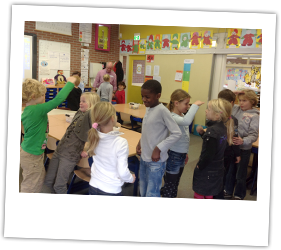
B. Types of Data and Data Collection Procedures
I created a survey to understand how my students felt about using Kagan Structures. Every two weeks, I had students rate their attitudes toward Kagan Stuctures on a number of dimensions:
- Structures are fun to participate in.
- Structures make topics more interesting to learn about.
- Structures help me communicate with others.
- Structures help me feel comfortable with my peers and teacher.
- Structures help me to participate more in class.
After making one of these positive statements about structures, I asked children to go to the corner of the room that best represented their feelings about the statement. The four corners were labeled:
- Strongly Agree
- Agree
- Disagree
- Strongly Disagree
I wanted to truly hear their feedback and to see if their opinions would change over time. I told the children that I was looking for their honest opinions and that they would not be penalized for their personal thoughts. I emphasized that I was not looking for what "I want to hear," rather the complete truth and insights into their feelings. Once students were in their chosen corner, I took a quick tally of the number of children in each corner. This technique allowed me to quickly analyze students' feelings toward the structures.
Findings
Survey Findings
Table 1: Initial Survey Results
|
Table 1 summarizes the results of the initial survey, conducted after two weeks of implementation. From this data, I was able to determine that the majority of my class had positive feelings about the use of Kagan Structures, so far. Two weeks into school, I was delighted with the progress I saw. The amount of success I was already seeing was astonishing. As a teacher, the hardest task is to be able to engage all learners and motivate them to work with one another. I was encouraged to see the positive responses by most of my students.
The majority of students Strongly Agreed (40%) with the positive statements about the Kagan Structures, followed by 36% of students who Agreed. There were, however, still a number of children who Disagreed (16%) and fewer yet who Strongly Disagreed (8%). Combined, 76% of responses were favorable (Strongly Agree and Agree), compared to 24% unfavorable (Disagree and Strongly Disagree).
These numbers were very telling and allowed me to make changes going forward. I realized that it was not all about my observations, but more about how my students were feeling towards the whole process. At this point, I took time to reflect, and I thought that the introduction to the structures, considering it was only two weeks into the school year, might have been a bit overwhelming for many students.
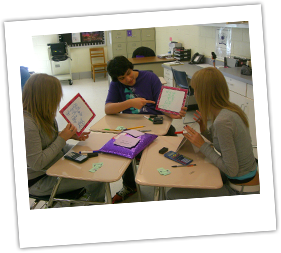
Going forward, I decided to adjust my original idea and chose to focus on the use of select structures during my data collection time. I chose to use RallyCoach, Timed Pair Share, RoundRobin and teambuilding structures. For the next two months, I implemented RallyCoach multiple times a week to create a routine and increase students' comfort with the structure. As we continued practicing this structure, my students and I became more enthusiastic with praising one another and added a new celebration to our list every few days. There were times during the day where I would see children praising each other when we weren't even doing a structure. One of my students said, "I liked RallyCoach because I liked being a coach." This structure gives students authority and dignifies their mathematical knowledge. Even the struggling student can feel a sense of empowerment. It has really helped my students' self-esteem and has increased students' level of comfort with their partners.
In addition to the various structures, I supplemented the structures with Kagan's computer software program SelectorTools. This software integrates well with the structures and allowed me to randomly select students to participate. One of my students said, "I like when we do Student Selector because it is fair and it is usually not fair. I also like that it can do different settings; in order, random, and more. Also, it makes me feel famous because my name is up on the board in big colors and everyone shouts out my name." Usually, at such a young age, children are not always eager to participate; they try to hide so they don't have to publicly answer questions. The Student Selector has opened the door for equal participation. All students understand that SelectorTools makes calling on a student 100% fair. The teacher has no control over whose name is going to flash in blue and red on the board. SelectorTools eliminated any type of hard feelings that the children could have towards their teacher. Students were compliant and willing to try their best even when they were not feeling comfortable with the content or question posed.
Praise and celebrations are integral to Kagan's methods. My students became infatuated with celebrating each other's accomplishments. After every child participated in class, we did celebrations. For example, in the celebration X-cellent, the children would say the word "EXCELLENT" while simultaneously making an X with their arms. One of my students shared that, "I really like the celebrations. First of all, I like the celebrations because you get to say and do something instead of just saying it normally. Also, I like celebrations because it's fun. You get to do hand movements and say something." Another student added, "Celebrations are fun because it makes me happy when I get to be celebrated. I love to do all of the celebrations and it's fun to do the movements." The overarching theme of students' opinions is that they enjoy the celebrations because they like to give and receive appreciation and get to be more active. They aren't just sitting still while others participate; they are engaged and able to move their body according to the chosen celebration.
Table 2: Final Survey Results
|
Table 2 summarizes the results of the final survey, conducted after eight weeks of implementing Kagan Structures. The final survey had the same pattern of results with the highest number of responses being the most favorable to structures (55% Strongly Agree) and the least number of responses being the least favorable (only 3% Strongly Disagree).
Combining all survey questions, 89% of the responses were favorable (Strongly Agree and Agree) compared to only 11% that were unfavorable (Strongly Disagree and Disagree).
Students' Perception of Structures
Charts 1–5 below illustrate the results of each statement surveyed at the end of the implementation period. To compare favorable vs. unfavorable student perceptions, "Agree" on the charts represents all favorable responses (Strongly Agree and Agree), and "Disagree" on the charts represents all unfavorable responses (Disagree and Strongly Disagree).
From the charts, it is clear that the overwhelming majority of students felt favorably about the structures compared to those who felt unfavorable. The survey results indicate that students enjoyed learning when participating in a structure. Structures have proven to not only be engaging, but enhance children's ability to communicate with their peers, communicate with their teacher, and participate more often.
Chart 1. Structures Are Fun
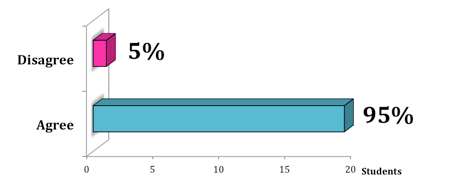
Chart 2. Structures Make Learning More Interesting
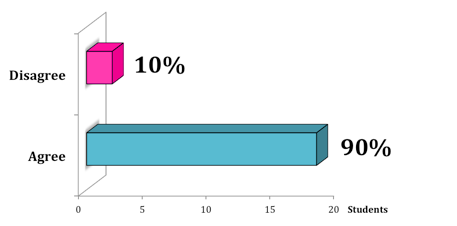
Chart 3. Structures Improve Communication
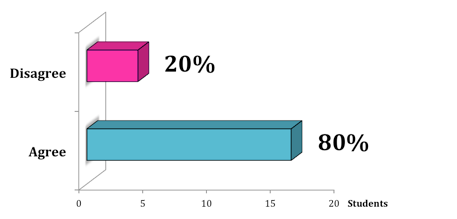
Chart 4. Structures Make Me More Comfortable with My Peers and My Teacher
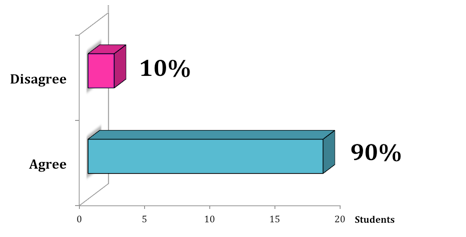
Chart 5. Structures Help Me Participate More

Comparison of Initial to Final Survey
Having an initial and final survey allowed me to compare my students' responses from the beginning to the end of the implementation period. Chart 6 compares the favorable ratings by students (Strongly Agree and Agree) on the initial survey with the favorable ratings on the final survey. Not only were students' attitudes very positive toward the Kagan Structures overall, they improved over time. I was overjoyed to see that my students felt as though using the Kagan Structures throughout the day benefited them academically and socially.
Chart 6. Students' Favorable Attitude Toward Structures
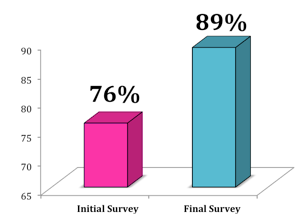
Conversely, students with unfavorable attitudes toward structures decreased in the same measure. Another very positive indicator is the most unfavorable survey results (Strongly Disagree) also decreased: 8% at the initial survey fell to only 3% at the final survey.
These charts highly emphasize the powerful impact Kagan's Cooperative Learning Structures have made on my students' learning experience. I feel satisfied knowing that my entire class gained something from the implementation of structures and grew as learners. They became more independent in the classroom when completing activities, more comfortable with talking in front of their peers, and beyond eager to participate in all of the class events. My wish is for these students to always hold on to what they have learned and carry it with them through their schooling experience.
Conclusion
As a teacher, this research process has deepened my understanding of the success of Kagan Cooperative Learning. I have become a true believer. I learned that even though this process was successful, it takes a lot of hard work to create a true cooperative learning environment. I worked very hard to create a safe atmosphere for my students in hopes that they would feel comfortable enough to give me their best effort. I found that as I set the groundwork, students were very receptive and tried their hardest. They built relationships with their peers, learned how to communicate kindly with one another, and celebrated each other's successes. As we began down the road in September, my students welcomed the idea of something new. The classbuilding structures opened the doors for success, allowing the children to bond and become comfortable being around each other. After I introduced teambuilding structures, all four members of the team were more willing and able to work together. Overall, the children adapted to their teams and looked forward to the opportunity to work in structures such as RallyCoach, Timed Pair Share, and RoundRobin. Additionally, many students at this age have a hard time supporting one another and truly encouraging their success. Kagan Cooperative Learning Structures taught my students how to encourage others to participate and to feel comfortable in their own skin. The greatest outcome I found throughout this process was the way the children learned how to interact with their peers. I learned that with simple structures, students became more engaged and more motivated to learn. My intent of this study was to test the impact of using Kagan Cooperative Learning Structures in the classroom on a number of important outcomes. In conclusion, all children would benefit from the use of Kagan Cooperative Learning.